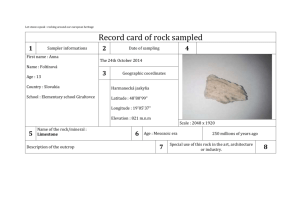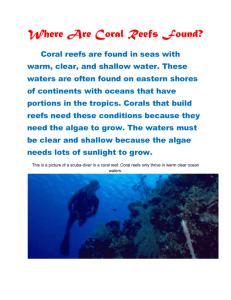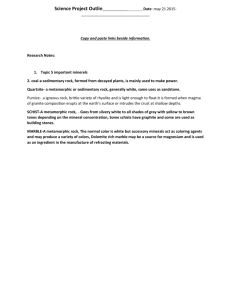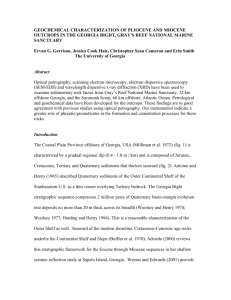NorthRock Reading 3-27
advertisement
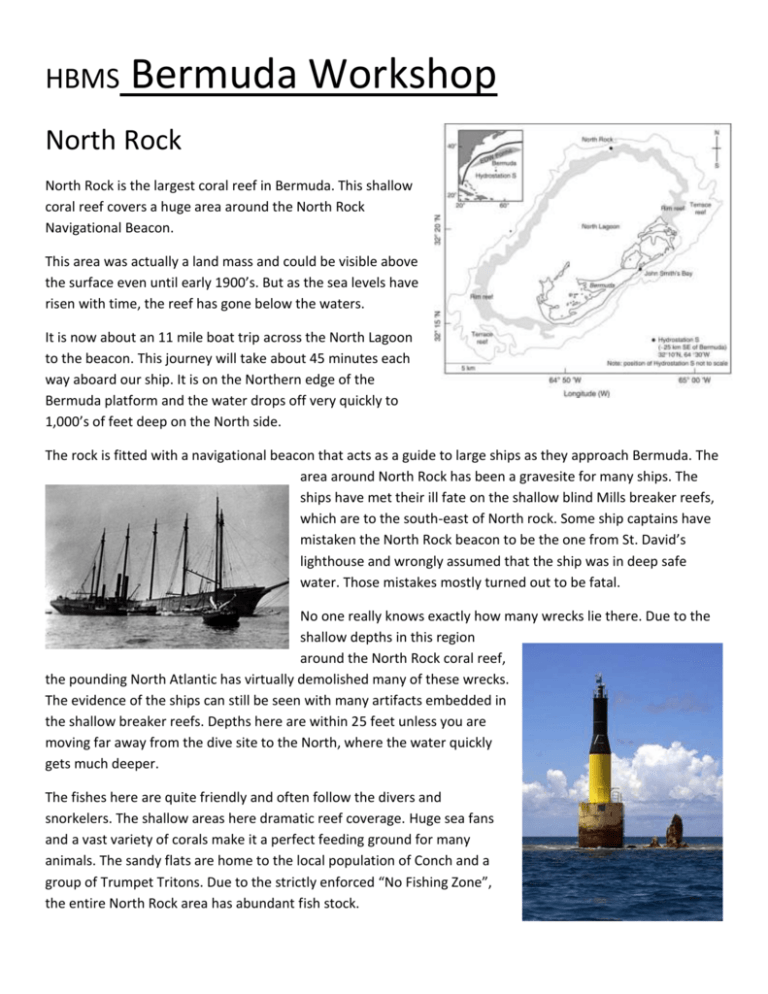
HBMS Bermuda Workshop North Rock North Rock is the largest coral reef in Bermuda. This shallow coral reef covers a huge area around the North Rock Navigational Beacon. This area was actually a land mass and could be visible above the surface even until early 1900’s. But as the sea levels have risen with time, the reef has gone below the waters. It is now about an 11 mile boat trip across the North Lagoon to the beacon. This journey will take about 45 minutes each way aboard our ship. It is on the Northern edge of the Bermuda platform and the water drops off very quickly to 1,000’s of feet deep on the North side. The rock is fitted with a navigational beacon that acts as a guide to large ships as they approach Bermuda. The area around North Rock has been a gravesite for many ships. The ships have met their ill fate on the shallow blind Mills breaker reefs, which are to the south-east of North rock. Some ship captains have mistaken the North Rock beacon to be the one from St. David’s lighthouse and wrongly assumed that the ship was in deep safe water. Those mistakes mostly turned out to be fatal. No one really knows exactly how many wrecks lie there. Due to the shallow depths in this region around the North Rock coral reef, the pounding North Atlantic has virtually demolished many of these wrecks. The evidence of the ships can still be seen with many artifacts embedded in the shallow breaker reefs. Depths here are within 25 feet unless you are moving far away from the dive site to the North, where the water quickly gets much deeper. The fishes here are quite friendly and often follow the divers and snorkelers. The shallow areas here dramatic reef coverage. Huge sea fans and a vast variety of corals make it a perfect feeding ground for many animals. The sandy flats are home to the local population of Conch and a group of Trumpet Tritons. Due to the strictly enforced “No Fishing Zone”, the entire North Rock area has abundant fish stock.
